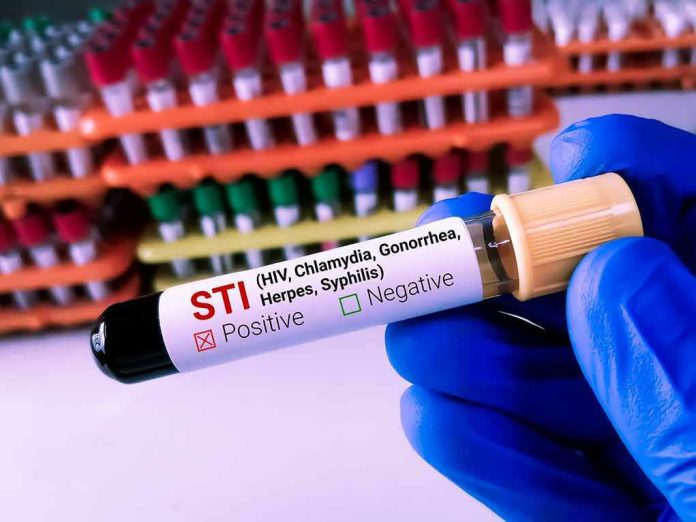
In less than a year, the world’s safety net for fighting HIV, tuberculosis, and malaria has unraveled so quickly that millions now stand at the brink of a preventable catastrophe.
Quick Take
- Massive funding cuts have triggered the closure of critical HIV, TB, and malaria programs in over 120 countries.
- Children and vulnerable communities face immediate and long-term life-threatening risks.
- Decades of public health progress are at risk of total reversal if donor commitments are not restored.
- U.S. and Global Fund decisions hold unprecedented influence over global disease outcomes in 2025 and beyond.
Unprecedented Funding Cuts Ignite a Global Health Crisis
January 2025 marked a turning point in global health when the United States, the historic leader in international aid for HIV, tuberculosis, and malaria, suspended and reviewed all foreign assistance. The move, quickly echoed by other major donors, froze billions in funding for community clinics, disease surveillance, and essential medicine supply chains. Over 120 countries dependent on this support saw immediate disruptions, with clinics closing overnight and frontline health workers laid off. The scale and speed of withdrawal dwarfed any previous funding gap, leaving health ministries scrambling and international agencies warning of a humanitarian disaster.
National programs in low- and middle-income countries—already fragile from the shocks of the COVID-19 pandemic—struggled to maintain even the most basic services. According to the World Health Organization, a 14% drop in tuberculosis case notifications was recorded in the first half of 2025, reflecting both the collapse of diagnostic capacity and the exodus of trained staff. Children, people living with HIV, and pregnant women became immediate casualties of these decisions, as community-based programs closed and stockouts of lifesaving drugs became the new normal.
The Human Cost: Decades of Progress at Stake
Donor fatigue and shifting political priorities may be familiar in international development, but the consequences of this year’s funding shortfall are unprecedented. Modeling studies published by Harvard and echoed by the Global Fund predict millions of new cases and deaths from HIV, TB, and malaria over the next decade unless major donors reverse course. Among the most chilling projections: 8.9 million additional child tuberculosis cases and 1.5 million child deaths by 2034 if support is not restored. For communities in sub-Saharan Africa and South Asia—the epicenters of these diseases—the future has never looked more uncertain.
Unlike previous shortfalls, such as those during the 2008 financial crisis, the 2025 cuts have triggered a domino effect, disrupting supply chains for diagnostics and medicines, undermining years of investments in workforce training, and threatening the very existence of national disease programs. The Global Fund, the world’s largest multilateral financier of HIV, TB, and malaria programs, faces a pivotal three-year funding decision in November 2025. Yet, confidence is low: the U.S. has not announced its next pledge, and other donors remain noncommittal, leaving program managers in limbo and patients in peril.
Stakeholders, Power, and the Fragility of Progress
U.S. policy decisions now ripple across continents. As the largest single donor, the U.S. government’s actions effectively set the pace for other contributors. The Global Fund, World Health Organization, and Médecins Sans Frontières have issued urgent pleas for renewed support, warning that lost ground will be exponentially harder and costlier to regain. Yet, with national budgets stretched thin by inflation and other competing crises, recipient governments have little leverage. Frontline NGOs, while resourceful, cannot fill the funding gap at the scale required. The power imbalance is stark: donor decisions made in Washington or Geneva reverberate through the tiniest rural clinics on the other side of the world.
Some experts and policymakers argue for greater domestic resource mobilization and health system integration as long-term solutions. But in the short term, only renewed international commitments can avert a historic reversal. Without decisive action, public health experts warn, the world risks not only increased disease and death but also wider economic, social, and political instability. The loss of a skilled health workforce, the breakdown of medical supply chains, and the erosion of public trust could undermine global readiness for future pandemics, making today’s crisis tomorrow’s chronic emergency.
What’s Next: The World Holds Its Breath
November 2025 looms as a moment of truth. The Global Fund’s next funding cycle will either trigger a lifeline or cement a decade of decline. Academic and frontline reports agree: restoring lost ground will be far more expensive and complex than sustaining progress. The harshest reality is that the most vulnerable—children, women, and those living with HIV—will pay the highest price for donor inaction. The open question, still unanswered as clinics close and diseases spread, is whether the world’s wealthiest nations will heed the warnings or become bystanders to a preventable tragedy.
Expert consensus, echoed by data from NGOs, the WHO, and academic modeling, is unambiguous. Only urgent, large-scale restoration of international funding can prevent millions of unnecessary deaths and preserve the fragile gains of the past two decades. The clock is ticking, and the world watches as a generation’s worth of progress hangs in the balance.
Sources:
EATG: Cuts to US foreign aid could drive millions of new TB cases and deaths, finds new study
World Health Organization: Impact of 2025 funding cuts
NIH PMC: Impact of international funding cuts on TB, HIV, and malaria
UNAIDS: Impact of US funding cuts



